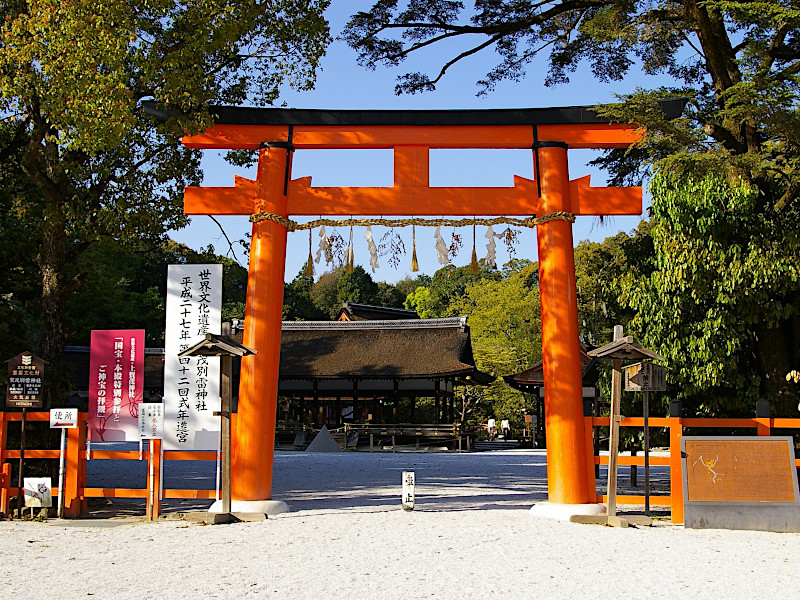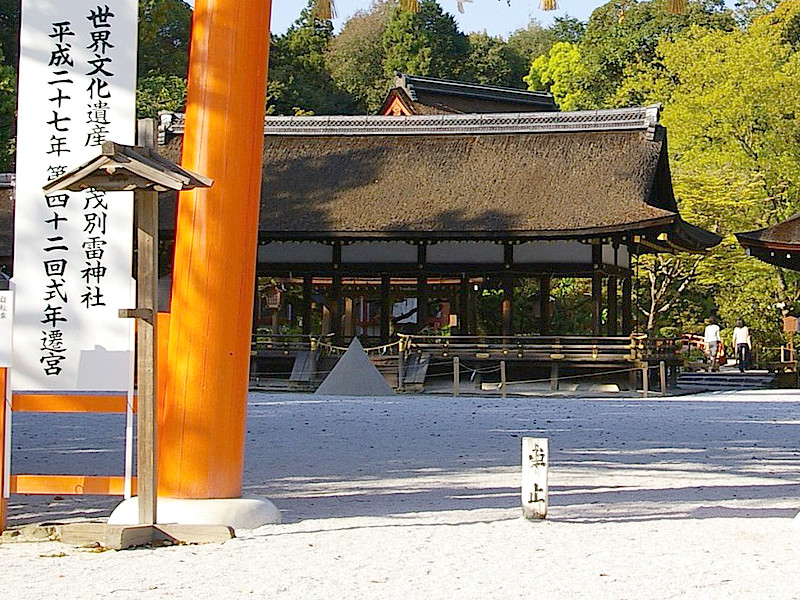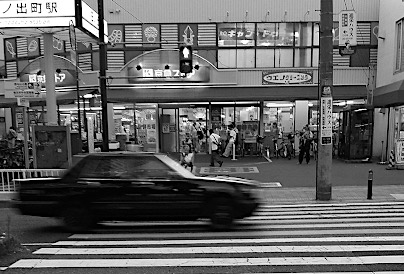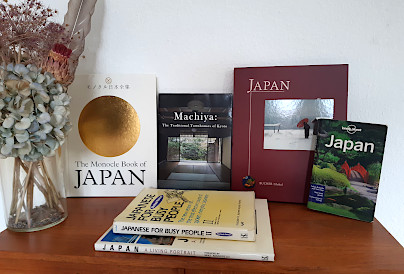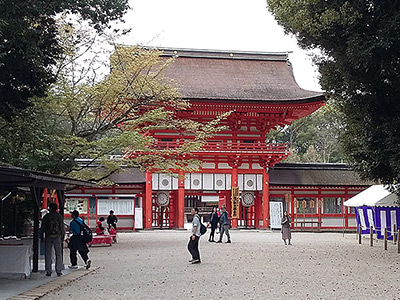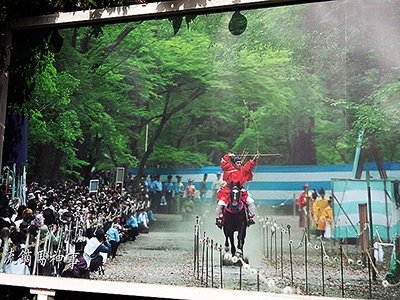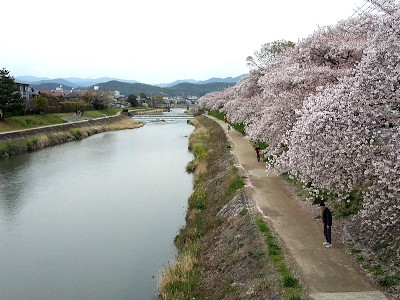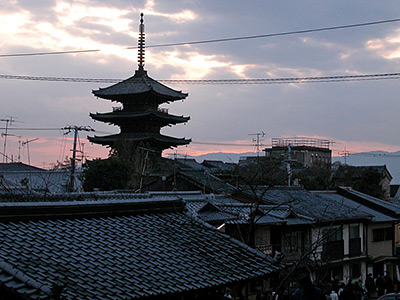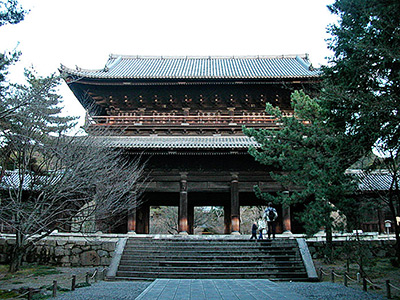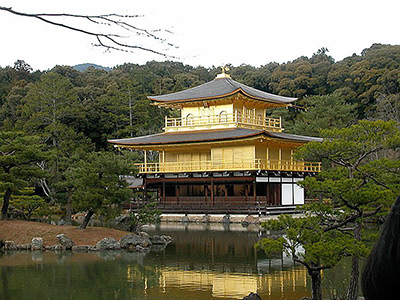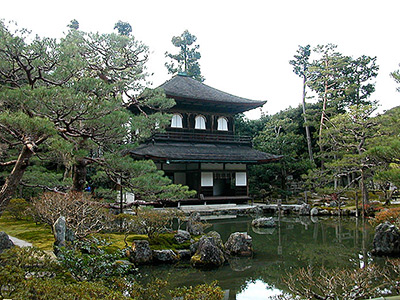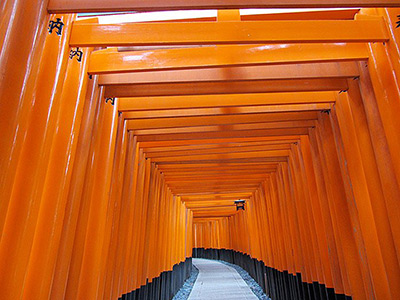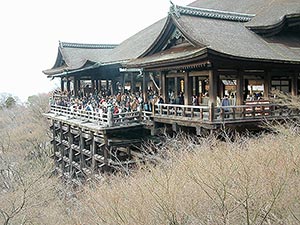Kamigamo Shrine in Kyoto
This post can contain affiliate links, which means that we may receive a small commission if you make a purchase using these links.
Facts & Figures
Kamigamo Shrine, also known as Kamigamo-jinja or Kamowakeikazuchi-jinja, belongs to the seventeen Historic Monuments of Ancient Kyoto, and these are part of the UNESCO World Heritage Site list. Kamigamo-jinja is one of the oldest Shinto shrines in the city with a history of over 1300 years. The shrine is located near Mount Koyama and the banks of the Kamogawa River in the northeastern part of Kyoto surrounded by a huge forest called Tadasu-no-Mori. A large vermillion-colored gate (torii) marks the entrance of the shrine area. The shrine grounds cover an area of approx. 760000 square meters. You will find here 41 Important Cultural Properties and two National Treasures. One of the three major festivals of the city, the Aoi Matsuri, is hosted here. The other two are Gion Matsuri and Jidai Matsuri. Kamigamo Shrine (upper shrine) is traditionally connected with the Shimogamo Shrine (lower shrine) in the south (3 kilometers away) and both together are known as the Kamo Shrines (Kamo-jinja). A special feature of the shrine is the two sand cones called Tatesuna in front of the worship hall. The principal deity Kamo Wakeikazuchi-no-Okami is worshipped here. It is said that the deity controls the natural elements and is associated with lightning and thunder, gives protection from natural disasters, offers good fortune, and much more. These days the kami is called the god of electricity and people working in the electrical and IT industries come here to pray. If you are lucky you will witness here a traditional Shinto marriage ceremony. This happens usually on the weekends from spring to autumn.
- Kamigamo Shrine area:
- Opening Hours - 8:00 am to 4:00 pm
- Opening Hours - 8:00 am to 4:30 pm (on Saturdays, Sundays and holidays)
- Closed - never, open every day
- Admission Fee - free
- Main Shrine (National Treasure):
- Opening Hours - 8:30 am to 4:00 pm
- Opening Hours - 8:30 am to 4:30 pm (on Saturdays, Sundays and holidays)
- Closed - never, open every day
- Admission Fee - 500 yen (Adults)
My tips for local activities
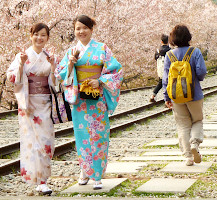
How about exploring the best parts of my favourite city Kyoto with a local guide? The personalized tour by our partner GetYourGuide can take between 2 - 8 hours. For more details check out this page >
History
The history of Kamigamo in Kyoto dates back to the 7th century. The construction of the first buildings started in 677 during the Asuka period (538 to 710). In 794 Emperor Kanmu (735 - 806) made the decision to move the capital of Japan to Kyoto. He visited the shrine to pray for peace in the country because the shrine had the reputation of protecting the city from misfortune. Over the years Kamigamo became more and more important and the support by the imperial court grew. During the Heian period (794 - 1185) Kamigamo-jinja became one of the highest-ranked Shinto shrines in Japan. Many emperors came here for a visit like Emperor Suzaku (921 – 952) in 942, and Emperor Enyu (958 – 991) in 979. In 1600 the famous shogun Tokugawa Ieyasu (1543 – 1616) made a pilgrimage to the shrine, during the Battle of Sekigahara. The Tokugawa clan supported the shrine financially for more than 200 years till 1867. Emperor Meiji (1852 - 1912) came here in 1868. Between 1871 and 1946 Kamigamo stood in the first rank of government-supported shrines. These shrines were called Kanpei-taisha. Kamigamo Shrine (Kamigamo-jinja) got in 1994 the status of a UNESCO World Heritage Site. To this day imperial messengers (chokushi) come here once a year during the Kamo Matsuri. Famous landscape architect Nakane Kinsaku (1917 – 1995) created in 1960 the Shokei’en Garden to celebrate the birth of Emperor Naruhito. Every 21 years a ritual reconstruction is performed at the Kamigamo Shrine. The ritual has the name shikinen sengu. This process is very cost-intensive and therefore only parts of the main hall are reconstructed these days, compared to a full rebuild like in the old days. For the famous Ise Shrine (Ise Jingu) in Ise city they are doing a full rebuild every 20 years.
Location

Kamigamo Shrine is located within the Kita Ward in the northeastern part of Kyoto near the Kamogawa River.
Address: 339 Kamigamo Motoyama, Kita Ward, Kyoto, 603-8047
How to get to Kamigamo Shrine?
- 15min from Kitayama Station by bus nr. 4 to Kamigmo-jinja-mae Stop and
- 3min walk from there to Kamigamo Shrine
Sightseeing spots at the Kamigamo Shrine area
Top:
Romon Gate - The two-story vermillion-colored gate, a designated Important Cultural Property, can be found at the entrance of the main hall. It was built in 1628. Legend says it is protecting the shrine from evil forces. Many rows of lanterns are attached to the gate, which display the names of the contributors to the shrine.
Tambashi Bridge - The vermillion-colored bridge is located right in front of the Romon Gate and spans the small Omonoi River. Only priests and people with a special invite are allowed to cross the bridge.
Honden (Main Sanctuary) - The building or sanctuary you see today was constructed in 1863. The architectural style of the Shinto shrine is called nagare-zukuri. This style can be recognized on the asymmetrical gabled roof. The kami or deity enshrined here is Wakeikazuchi-no-Okami. Honden has the status of a National Treasure.
Gonden (Temporary Sanctuary) - The building or sanctuary is a twin of the Honden (Main Sanctuary). It will be used once the Honden is closed for repairs. Gonden has also the status of a National Treasure.
Paintings and statues - Do not miss the amazing paintings on the walls within the Main Sanctuary and Temporary Sanctuary. This wonderful artwork of komainu beasts (mystical creatures of a mixture of a lion and a dog) and karajishi lions was done by artists of the famous Kano School in Kyoto during the Edo period (1603 - 1868).
Tatesuna - These famous sand mounds near the Hosodono hall are formed by hand by a priest. They represent the sacred Mt. Koyama. They are a symbol to harness the spiritual power of Mt. Koyama. On top of each mound, you will see pine needles. They stand for trees on top of the mountain.
Hosodono Hall - This was originally an open-air structure, but later some wooden outer walls were attached to it. The hall has the status of an Important Cultural Property. Hosodono dates back to the Kamakura period (1185–1333) and is not open to the public.
Hashidono Hall - The hall/stage is an open-air structure crossing the Nara-no-Ogawa stream. Hashidono dates back to the Kamakura period (1185–1333) and is not open to the public.
Mitarai-sha subsidiary shrine - The shrine is dedicated to the kami of clean water and purification. It hosts the well-known Mitarashi Festival in July.
Koto Sub-Shrine - This shrine is made out of seven smaller shrines. These buildings are dedicated to certain Chinese Zodiac symbols. Locals come here to pray for successful business ventures and luck in life.
Tadasu-no-Mori - This is the name of the forest you are walking through on the way to Kamigamo. Over forty different species of trees can be seen here. Some of them reach an age of over 600 years.
Omonoi and Mitarashi Rivers - Kamigamo-jinja is located at the meeting point of these two small rivers (Nara-no-Ogawa). Once you cross the bridge of one of these rivers you have already gone through a symbolic purification.
Katayama Miko Shrine - It is the most important out of 24 sub-shrines like the Ota-jinja or Shingu-jinja Shrine, here and locals come to this place to pray for safe childbirth and marital bliss. The exact construction date is unknown, but the shrine was mentioned already over 1000 years ago.
Shinmesha - This is the stable of the sacred horse. The usually white horse has the function of the divine messenger for the deity Kamo Wakeikazuchi-no-Okami. You can come here to feed the horse on Sundays from 9:30 am to 3:00 pm and on national holidays.
Festival & Events in Kyoto(dates can change without notice)
Every month
Kamigamo-jinja Handicraft Market (fourth Sunday every month)
The market dates back to 2006 and over 250 stalls with great handmade products are waiting for you from 9:00 am to 4:00 pm.
April
Miyako Odori (1st - 31th)
The traditional annual spring dance of the Kyoto district Gion Kobu performed by Geiko and Maiko is a must-see on your Kyoto visit. Don't miss the most popular dances the Miyako Odori "Cherry Blossom Dances" or "Dances of the Old Capital" at the Gion Kobu Kaburenjo Theater (located close to Gion Corner).
May
Aoi Matsuri (15th)
The highlight of this festival is a large parade from the Imperial Palace through the Shimogamo Shrine to the Kamo Shrines. More than 500 people wearing aristocratic costumes from the Heian Period (794 - 1185). The Aoi Matsuri belongs with the Gion Matsuri and Jidai Matsuri as the three most famous festivals in Kyoto.
June
Aoba Matsuri (Green Leaf Festival) at Chishaku-in (15th)
The festival is an ancient ritual of followers of the Shingon sect of Buddhism, which is called Yamabushi. They participate in a series of ceremonies like celebrating the birth of founder Kobo-Daishi (744 - 835).
July
Gion Matsuri (whole month)
The month of July is full of different events like the Yoiyama - Kyoto's Magical Night (locals in kimonos look at the giant Gion floats the day before the parade) or the famous Yamaboko Junko (float procession on the 17th of July).
Mitarashi Festival at Kamigamo-jinja (21st - 30th)
People come here on the hottest days of the year in July. You have to pay 200 yen for a small candle and walk through cold and refreshing water and further under a bridge where you soon reach the sub-shrine. There you place the candle, say your prayer, and receive a little gift in the form of a cup of clear spring water.
October
Jidai Matsuri ("Festival of Ages") (22nd)
People celebrate with a large parade between Imperial Palace to Heian Shrine the anniversary of the foundation of Kyoto. App. 2000 participants wearing historical costumes from different time periods. Enjoy this great festival which lasts around 2 hours. Illumination event at Kodai-ji (end of October - beginning of December)
Where to stay in Kyoto?
Day trips from Kyoto:
My 100 Best Moments in Japan
I have visited Japan nearly every year since 2004. This is my collection of the 100 best moments in my favorite country. Enjoy the pictures and I hope you will start your own journey soon.
Find out more >
Books about Japan
Reading books is a great source of inspiration for me. Check out my recommended list of books about the fascinating country Japan.
My Book recommendations >

